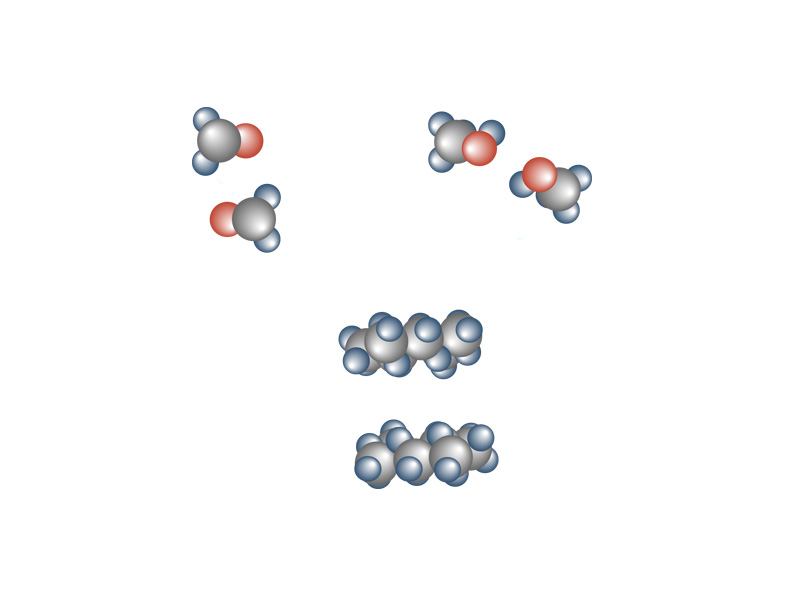Interdisciplinary Note (20 of 22)
Intermolecular forces are electrostatic interactions that operate between molecules. They are of primarilly three types: Van der Waals (or London disperson forces), dipole-dipole, hydrogen bonding. The type of intermolecular force a molecule exert depends on the electronegativity difference between its bonded atoms and its molecular geometry.
Nonpolar molecules (or molecules with zero net dipole moment due to their geometry) interact by London dispersion forces. A spontaneous, random dipole forming on one molecule induces a dipole on another leading to a weak interaction. These are weaker than dipole-dipole interactions or hydrogen bonds. Note that you may run into two usages of the term "Van der Waals" force. Most use it solely to refer to London dispersion forces of the type we just described, but occasionally you may see it referring also to intermolecular force in general.
A molecule possessing polar covalent bonds may engage in dipole-dipole interactions. This type of intermolecular force is stronger than Van der Waals force.
Furthermore, in the special case where a hydrogen atom is covalently bonded to a highly electronegative atom such as nitrogen or oxygen, the type of intermolecular force that results is called hydrogen bonding. Because the hydrogen end is a bare proton that can partially share electrons from the negative pole of the adjacent molecule, hydrogen bonds are an order of magnitude stronger than ordinary dipole-dipole interactions.
Keep in mind that intermolecular forces are fundamentally electrostatic interactions (although London dispersion forces have a magnetic component also). Applying the classical electrostatic description, we understand that the greater the forces of attraction between molecules, the more the energy of the system must be increased as molecules are separated from each other, as in vaporization.
Phase change is an intermolecular event. Let us apply our understanding of electrostatics to the phenomenon of vaporization to help us develop a sense of the thermochemistry of the process.
We are at a stage in our MCAT preparation where we want to create a bridge between basic electrostatics that runs through our understanding of the types of interactions that occur at the particle level in chemistry to the next stage of chemistry, which takes the perspective of thermodynamics.
The internal energy change associated with vaporization is along the lines of the electrostatic potential energy increase that goes with separating mutually attracting molecules. The greater the strength of intermolecular force, the greater the internal energy increase required for vaporization, so substances for which the mode of intermolecular force is hydrogen bonding are higher boiling than similarly sized molecules taking part in dipole-dipole interactions. A higher temperature must be reached for the kinetic energy of the molecules to be sufficient to allow them to escape from each other.
The lowest boiling substances only have weak Van der Waals attractions between molecules, so a simplified picture shows them moving only slowly and having sufficient energy to escape from the potential energy well of their mutual attraction, in other words, to leave the condensed liquid phase and become vapor. Molecular weight and the strength of intermolecular force are the primary determining factors of the boiling point.
